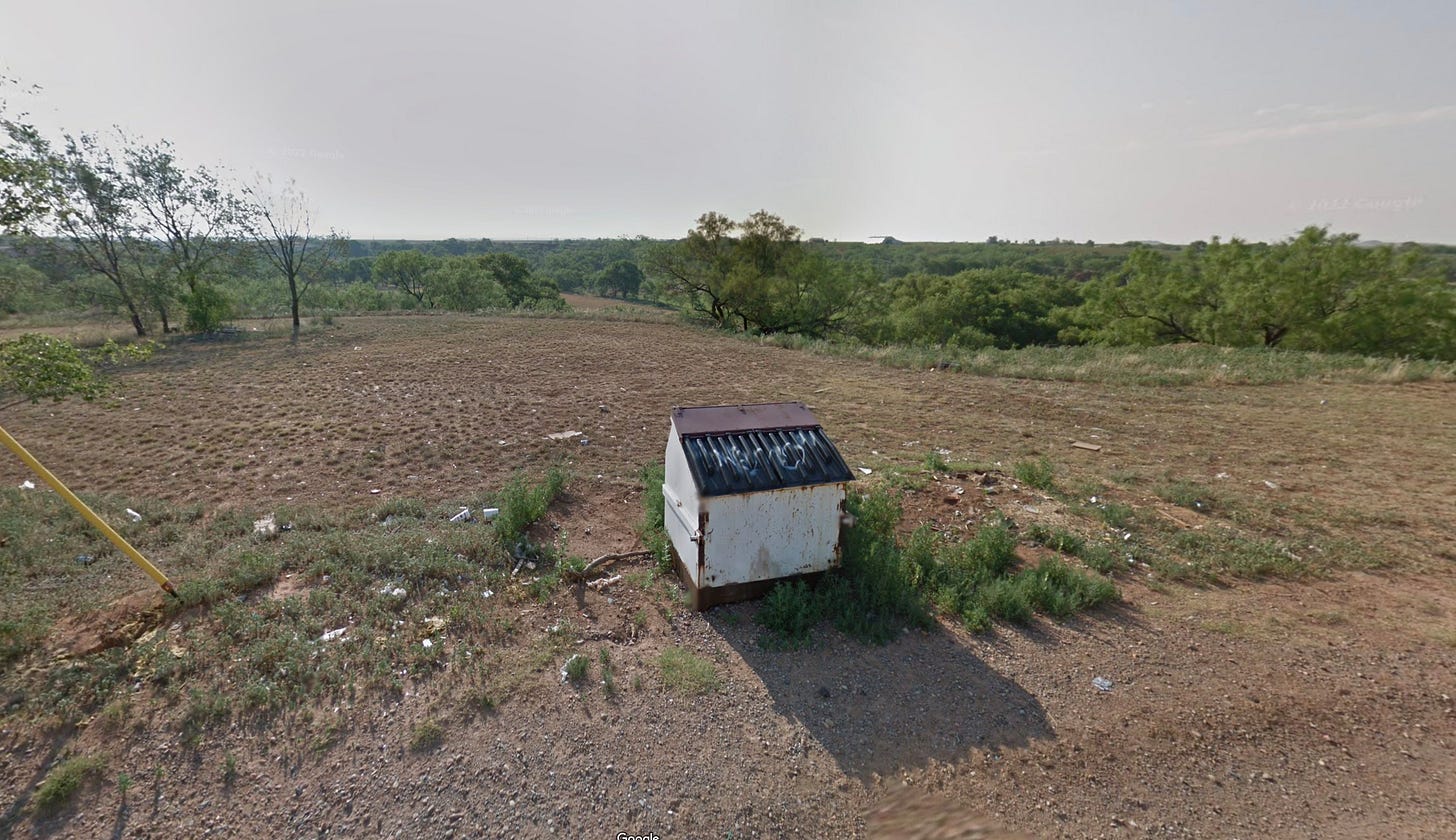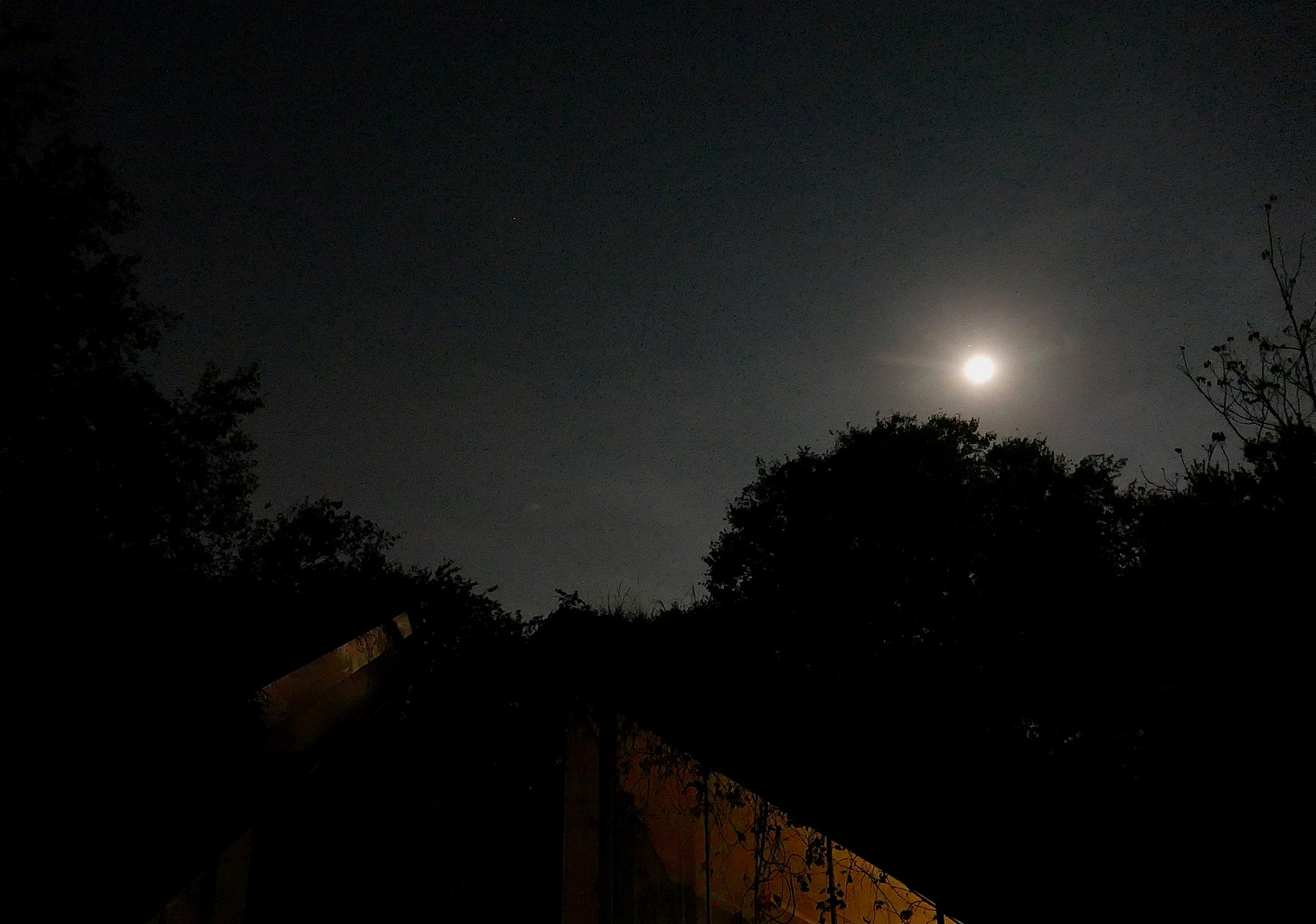Apocalypse Macaroni and Other Signs of the Fall
No. 164
Friday morning everyone in Texas with a smartphone got an Emergency Alert from the authorities at 4:53 a.m. The last time that happened, it was the night of an extreme winter storm, and the alert notified us that rolling power outages had been implemented to protect the grid. The alert said the outages would only last for 45 minutes or so, but they ended up lasting days, leaving us to figure out how to get by with no heat or electricity, and then no water, in a rare deep freeze. Hundreds of people died, some of them from trying to warm their homes with stove gas. You get trained to read the alerts, even if they teach you not to trust the authorities that send them.
This one was not about the weather. It was an Amber Alert about a guy named Seth who had allegedly shot the sheriff in the Panhandle town of Memphis and was now armed, dangerous and on the loose. We went back to sleep, and dreams of the storm we know will someday come and force us to evacuate.
The weather these days always seems a little off. Like the seasons of memory have gone for good, subtly morphed into weird, uncanny valley imitations that have broken free of the basic meteorological parameters we long took for granted. And you can’t help but think they’re just getting started.
This summer in Austin wasn’t quite as bad as last, with its dystopian wet bulb combinations of heat and humidity. But the weather the new moon of October brought is schizophrenic—autumnal and cool in the mornings, but then intensely hot and sunny over the full arc of the day. The trees seem a little confused. We’re just glad the air has at least dried up a good bit, suggesting the season for summer storms has passed.
We live 200 miles from the coast. We also live on a river, our house perched on an eroded, trash-ridden bluff just above the floodplain. We’ve been through three major hurricanes since we moved here in 2010, each of which delivered heavy rains to where we live, flooding the river, twice rising far enough up the last bank that separates us from the river that our dogs could swim in the yard. In the first of those storms, our neighbors seven doors down had their entire yard slide right into the river. We get scared, but then it’s okay, and we enjoy the way a walk into the disaster area suspends the monotony and self-absorption of everyday life.
This week I watched the photos come in from downtown Asheville, of streets I have walked on beautiful summer days suddenly and unexpectedly underwater. I happened to have been reading the new book of a friend of mine who lives there, Nathan Ballingrud—we had just swapped our latest books. Nathan and I became friends attending the Sycamore Hill workshop outside Asheville several summers over the course of a decade. He writes beautifully crafted and intensely felt literary horror, and from him I learned the power of non-redemptive narrative—stories that tell the unflinching truth about the way the world sometimes works.
Nathan assured us he and his daughter were fine, even as he shared photos of the place where they live half-submerged, noted they were without power or water, and someone had stolen his motorcycle in the chaos. That night, I read more of his beautiful story about a lady in the 1920s committed to an asylum at the edge of a forest on the Moon.
The next day I read how Costco has been selling out of the emergency readiness food packs it started stocking a while back, capitalizing on our collective sense of imminent disaster—plastic buckets of just-add-water meals with a 25-year shelf life. The Readywise Emergency Food Bucket includes a potpourri of 150 1970s TV dinner-grade packs: Cheesy Macaroni, Teriyaki Rice, Instant White Rice, Creamy Pasta & Vegetables, Pasta Alfredo, Apple Cinnamon Cereal, Crunchy Granola, Potatoes & Chicken Flavored Pot Pie, and Tomato Basil Soup with Pasta. And catalog copy that reads like a naturally occurring passage from a Philip K. Dick novel:
This meticulously curated package goes beyond just food – it's about readiness in the face of uncertainty. With 80 servings of hearty entrees & sides, 30 servings for nourishing breakfasts, and an additional 40 drink servings, ReadyWise equips you for a range of situations.
In a world where unpredictability has become a constant, our assortment takes on a vital role in emergency preparedness. Imagine the sudden onset of severe weather, the challenges of unexpected job transitions, or the unsettling thought of food shortages. These are the moments when having a reliable source of sustenance becomes a game-changer.
ReadyWise acknowledges that being prepared means more than just having enough to eat. It's about having the peace of mind that comes from knowing you've taken proactive steps to secure your well-being. Our selection of freeze-dried and dehydrated foods isn't just about immediate convenience; it's about resilience that extends into the future.
With a remarkable shelf life of up to 25 years, this assortment isn't just a temporary fix – it's a long-term solution. It's a tangible expression of your dedication to ensuring you and your loved ones are cared for, no matter what lies ahead. But it's not just about survival; it's about maintaining a sense of normalcy, comfort, and even enjoyment during challenging times.
By simply adding water, these carefully crafted meals transform into satisfying dishes within minutes. This convenience isn't just about simplicity; it's about maintaining a sense of normalcy when the world around you might feel anything but normal.
In a world where disruptions have become the norm, the Comprehensive Bucket Assortment from ReadyWise stands as a symbol of your commitment to being prepared. It's a tangible reminder that taking charge of your preparedness can mean the difference between uncertainty and confidence, between anxiety and stability. So, go beyond mere food storage – embrace readiness with ReadyWise.
When I sent Nathan and other genre writer friends the review copies of A Natural History of Empty Lots over the summer, I included a note about how I always wanted to write a cozy catastrophe story, but I didn’t anticipate it would be nonfiction. And I talk about that toward the end of the book, in a section that recounts our experience of that winter storm, about growing up in a culture flush with narratives of disaster that purport to be warnings but also express repressed yearnings—the existential yearning for the kind of crisis that can shatter the malaise, and the unspoken desire that comes with the last wave, or the jungle that overtakes the abandoned city, for nature’s correction of our hubris and restoration of balance."
Saturday morning Lupe and I went for a walk in the empty lots behind the abandoned dairy plant, now that the morning temps are finally cool enough for her old bones to comfortably ramble. The plant they call old man’s beard, a vine that expresses late in the season with extravagant feathery blooms, bringing new life when all the other plants seem to have given up, was abundant and lush on the scrubby young mesquites, as a passenger jet took off against the rising sun.
Clematis drummondii is one of those plants you can tell will survive the disaster. As will we, if recognize that the dark fantasy of Hobbesian competition encoded in the marketing copy of Costco’s apocalypse buckets is a lie.
The real way to make the catastrophe cozy is not by being the well-armed guard of the private stockpile you hard in your bunker, but by working with your neighbors to collaboratively endure—something you can do in the spare time everyday life allows, through conservation work, community advocacy, even just getting to know each other and other other life around you. It’s not hard to imagine what we could accomplish if we all got to work on that now, on taking little steps to prevent or at least mitigate the consequences of our centuries-long planetary shopping spree, instead of waiting for meaningful action from institutions that are deeply invested in the status quo. We might find it’s not too late to figure out how to live the way we were meant to live.
The Roundup
Thanks to all the folks who came out to Interabang Books and The Wild Detectives in Dallas for the launch of A Natural History of Empty Lots—from the folks who showed up both nights (!) to those who wandered into Wild Detectives for a drink, sat down to hear what we were talking about, and ended up joining in the night’s conversation.
For more on the book, you can check out this very generous review by Carolyn Kellogg from Wednesday’s L.A. Times (calling the book “essential,” “full of brainy fruit,” and “full of both evidence that [the millennial survival of our civilization] is unlikely and hope that it could be possible”), and the Texas Monthly piece by Kristen Steenbeeke (“Christopher Brown’s Abandoned Lots Are Anything but Empty”) that ran the week before. The best part of these for me was seeing that both reviewers took the book’s invitation to go out themselves for the kinds of walks in the urban edgelands the book invites.
If you’re a subscriber to the amazing daily culture newsletter Dirt, you should have a copy in your inbox from Friday’s of Dirt founder and CEO Daisy Alioto interview with me.
I’ll be in Des Moines October 16 at Beaverdale Books, while I’m in town for meetings related to the Alex Brown Foundation, and hope to see some of you there. If you’re in Austin and missed our BookPeople event last month, I’ll be at the Texas Book Festival in November, and will also be out in the Pacific Northwest later in the fall—details to come.
The launch of the book has connected me with all sorts of like-minded folks, including writer Brendan Egan based in Midland, who has written some really beautiful work in a similar vein. Check out his amazing dispatch at the Oxford American, “Five Hours from Someplace Beautiful.”
On the psychology of living through hurricane season, check out Jeff VanderMeer’s op-ed on the subject for the NY Times, writing from his hotel in South Carolina after evacuating ahead of Helene.
And to support another hard-working writer impacted by Hurricane Helene, please consider checking out the work of Nathan Ballingrud. His newest, which I am really digging, is the novella Crypt of the Moon Spider, and I remain extremely crazy for the short stories collected in North American Lake Monsters.
Lastly, Brett Gaylor’s podcast series Necessary Tomorrows, about hopeful futures to be found in both our most fantastic science fictions and in the tireless work of contemporary activists working toward such futures, is up for a Signal Award for Best Experimental Podcast. Necessary Tomorrows combines documentary episodes with short fictions, in a really innovative way. For a flavor, check out the below episode about “The Rights of Nature” I helped with, hear what it’s like to canoe past the Tesla Gigafactory, and then go cast your vote:
The fiction episode I scripted, “The Last Impala,” is here.
Thanks for reading, and have a great week.










The commodification and thus normalisation of the likelihood of climate catastrophe and its accompanying fear is striking in this piece. Costco emergency survival packs—what a world! We haven’t quite reached that stage of commercial preparedness for catastrophe here in the UK, though I dare say we’re not far behind.
Congrats on the great review from Carolyn Kellogg!